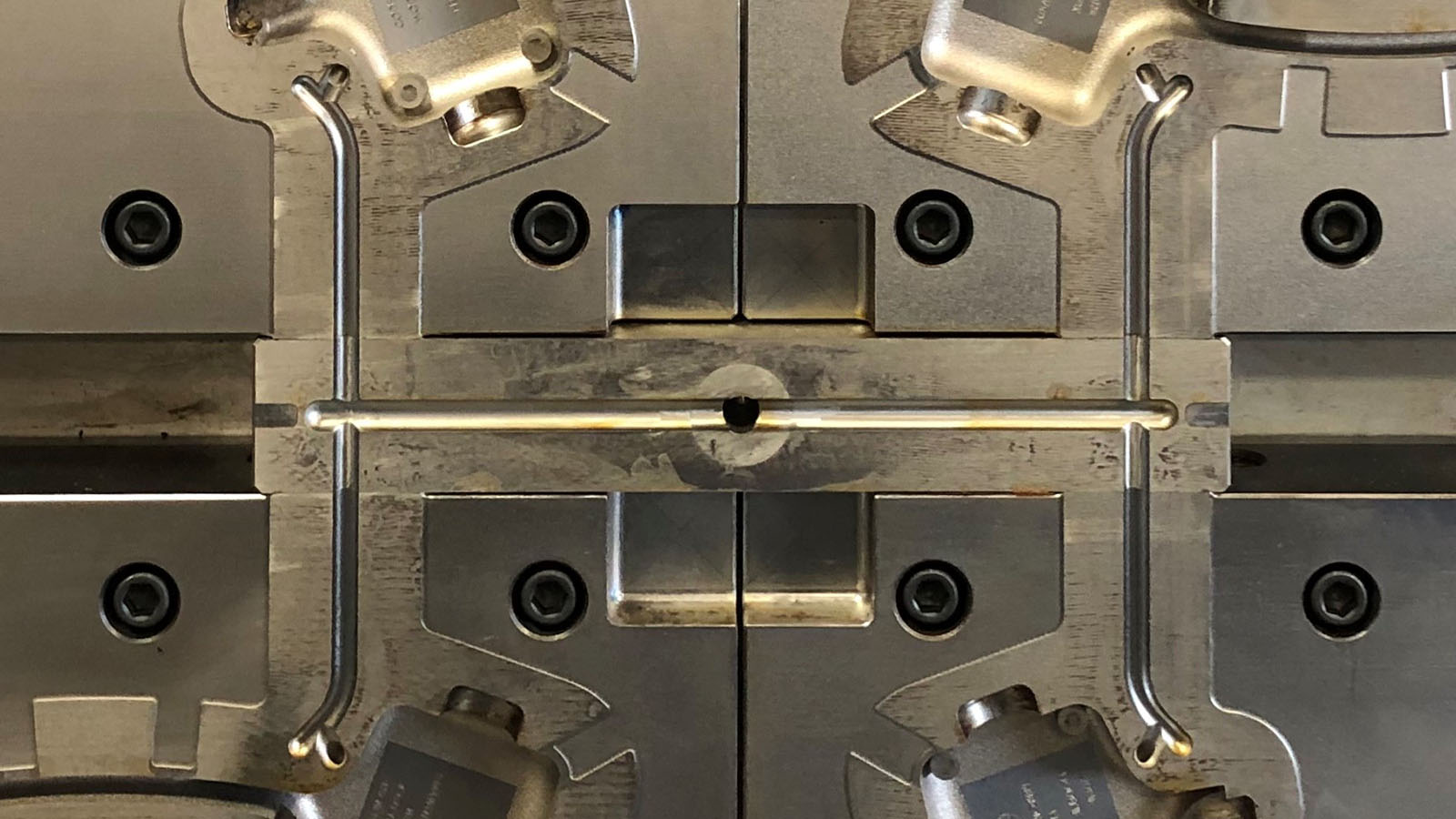Each injection molded part has one or more gate locations. The gate is where the molten plastic enters the part form from the runner system. Mold designers will take careful measures to ensure that a gate is sized and designed correctly for a part. One important consideration, especially for high volume molding applications, is how the gate will be maintained over time. In the article, we’ll talk about why gates wear and how this issue can be addressed.
What makes gates wear out?
Gate wear is heavily dependent on a few factors in the injection molding process. The largest concern is the type of material being processed. Glass filled materials will wear gates (and all other areas of the tooling) much faster than other materials (like polypropylene, for example). Simply put, there is no way around this reality. Using hardened steel tooling to make the gate last as long as possible does help, but even then, filled materials will still wear gates out.
Why does it matter?
As gates wear, the indirect processing parameters of the injection molding machine will change. Since the gate gets bigger as it wears, gate freeze time will be slower, gate shear will be lower, pressures will be lower, etc. When any of these processes change, the part will change. For many plastic components, a slightly larger gate and some modified processing parameters will not make any noticeable difference in the part. Some parts, however, can be drastically affected by small changes. It’s a good practice to check gate sizes regularly and maintain good process logs. Watching trends over time can help you manage and sometimes predict gate wear issues.
Fixing a Worn Gate
In a previous article, we detailed the most common gate designs. With the exception of a valve gate on a hot runner system, gates are all repaired in one of two ways. Either the gate is welded, or the gate is inserted. Welding a gate adds material back to the gate area to replace what has worn away. A technician then machines the added material back to the original form. If welding is not possible or practical, the gate can be inserted.
To insert a gate, an engineer first designs a section of the part that makes the entire gate area a removable insert. In high volume applications (especially those using glass filled materials), an engineer may even insert the gates on a brand new mold and make extra inserts. In this example, once the gate wears, new gates can be installed quickly. Proactively inserting gates also saves on future downtime and makes scheduled maintenance much more predictable. Instead of planning maintenance to check gates, a mold builder can plan on swapping out the gates at a predetermined time.


